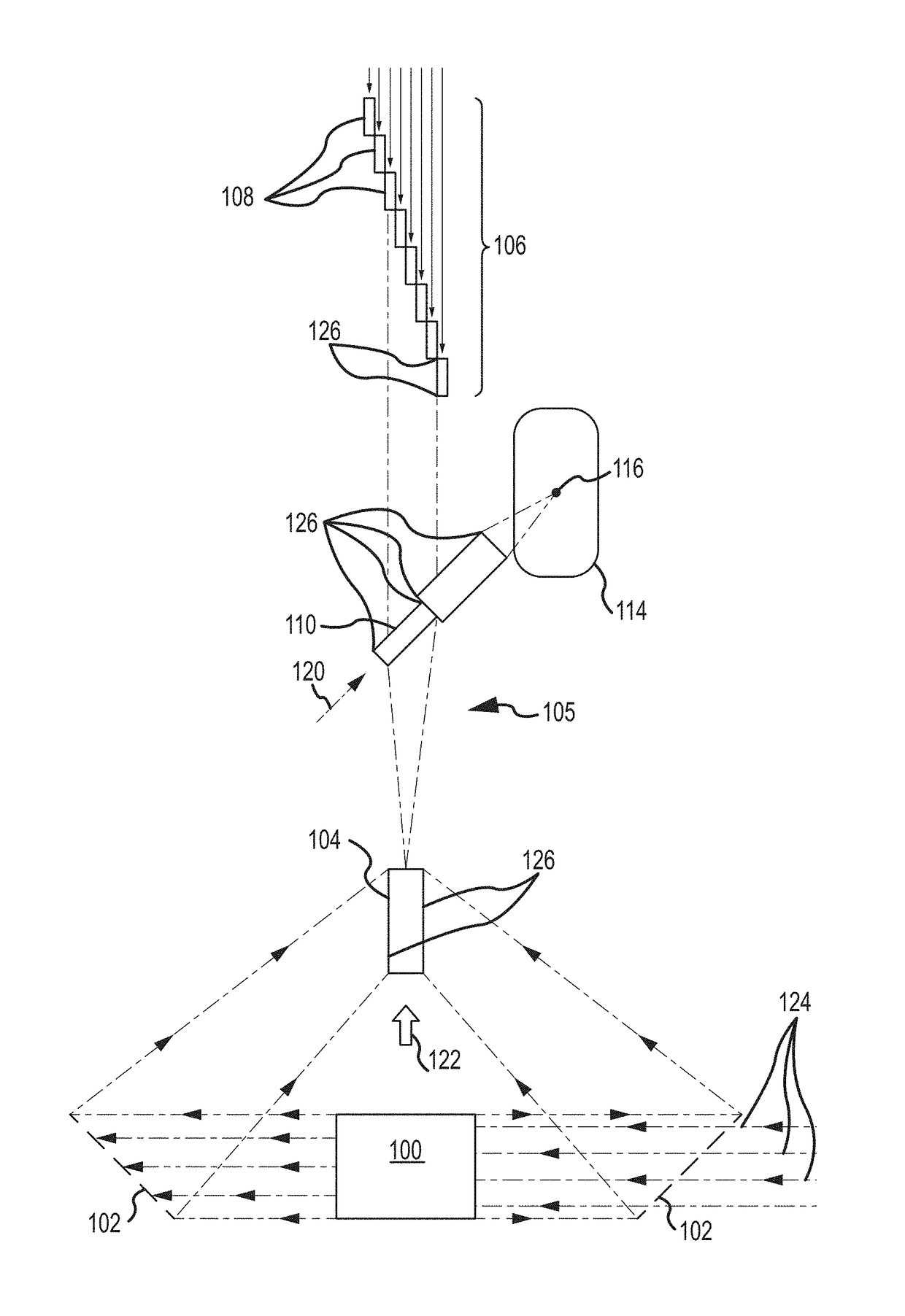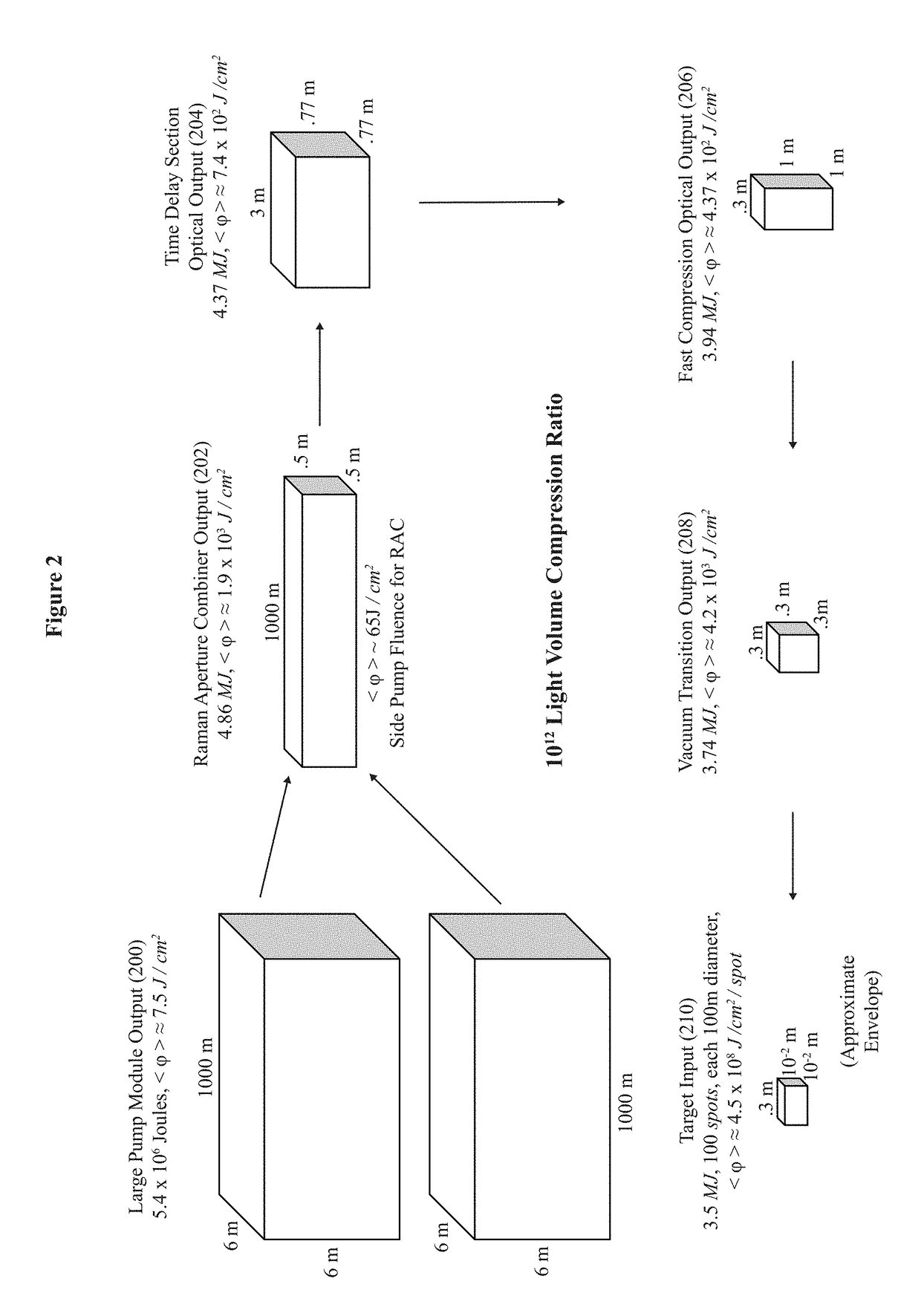Optical Configurations for Fusion Laser
a technology of optical configuration and fusion laser, which is applied in the direction of nuclear reactors, nuclear energy reduction, greenhouse gas reduction, etc., can solve the problems of loss of internal energy to light or gain of light, and achieve the effect of low cost and low cos
- Summary
- Abstract
- Description
- Claims
- Application Information
AI Technical Summary
Benefits of technology
Problems solved by technology
Method used
Image
Examples
first embodiment
[0081]FIG. 14 shows the layout of a first embodiment in a form emphasizing the partition of elements into their operating or ambient environment. Primary Laser Source [134] which may include Large Pump Module [100] and Turning Array [102, not shown] may be located in air as may be all seed laser sources [136] subsequently amplified by the Primary Laser Source, Raman Converter, Time Delay Mirrors or Fast Compressor. Seed laser beam paths may utilize higher optical quality (especially the Fast Compressor inputs), and may be isolated in stable temperature paths separated by an enclosure from ambient air. Some of these seed laser paths could also be enclosed in tubes filled with N2. Inputs to the Raman Aperture Converter [104] may be located in air (shown more clearly as shutters [126] on the Raman Aperture Converter in FIG. 15). FIG. 15 also shows an example of the input to the Raman Aperture Converter (seed laser input) as a window but could also be shutter(s). Returning to FIG. 14, t...
second embodiment
[0096]In FIGS. 6 and 16, High Fluence Material Mirrors [600] are used in the Time Delay Section [106]. The energy and overall pulse length parameters of the Large Pump Module [100] and the Raman Aperture Combiner [104] may be the same as in the exemplary embodiment. The Raman Aperture Combiner Optical Output [202] may be altered to match this type of mirror. The number of compression channels may be increased to 130, for example. The Raman Aperture Combiner Optical Output [202] fluence is 1.8×107 joules / m2, with a total energy of 4.5×106 joules. The size of the High Fluence Material Mirrors [600] may be 0.5 m×0.5 m for a total area of 32.5 m2, for example. This may give an average mirror fluence of 1.38×105 joules / m2, or, 13.8 joules / cm2 for a 2.3×107 second pulse length. Table II, based on “High Damage Threshold Al2O3 / SiO2 Coatings for Excimer Lasers,” supra, may give high reflectivity mirror coating damage levels of 13 joules / cm2 and 27 joules / cm2 for fresh and conditioned halide ...
third embodiment
[0097]FIGS. 7 and 9 are based on a direct high compression arrangement. This embodiment has a high fluence propagation through a helium and / or neon gas in the Time Delay Section [106] and can operate at very high fluence. Some embodiments have the number of time multiplexing channels at 102, and the Active Time Delay Mirrors [108] compression ratio is 15, giving a 2×10−9 second pulse onto target. To facilitate optical performance, one can make the Backward Raman Mirror Inputs to Active Time Delay Mirrors [118] phase coherent with adaptive optics. The target pattern can be phase impressed in the low power region before the Active Time Delay Mirrors [108]. This may deliver 3.6×106 joules to the target per beamline, for example. This embodiment is very compact, and has few elements. Note that the Fast Compressor [110] may be eliminated.
PUM
 Login to View More
Login to View More Abstract
Description
Claims
Application Information
 Login to View More
Login to View More - R&D
- Intellectual Property
- Life Sciences
- Materials
- Tech Scout
- Unparalleled Data Quality
- Higher Quality Content
- 60% Fewer Hallucinations
Browse by: Latest US Patents, China's latest patents, Technical Efficacy Thesaurus, Application Domain, Technology Topic, Popular Technical Reports.
© 2025 PatSnap. All rights reserved.Legal|Privacy policy|Modern Slavery Act Transparency Statement|Sitemap|About US| Contact US: help@patsnap.com



